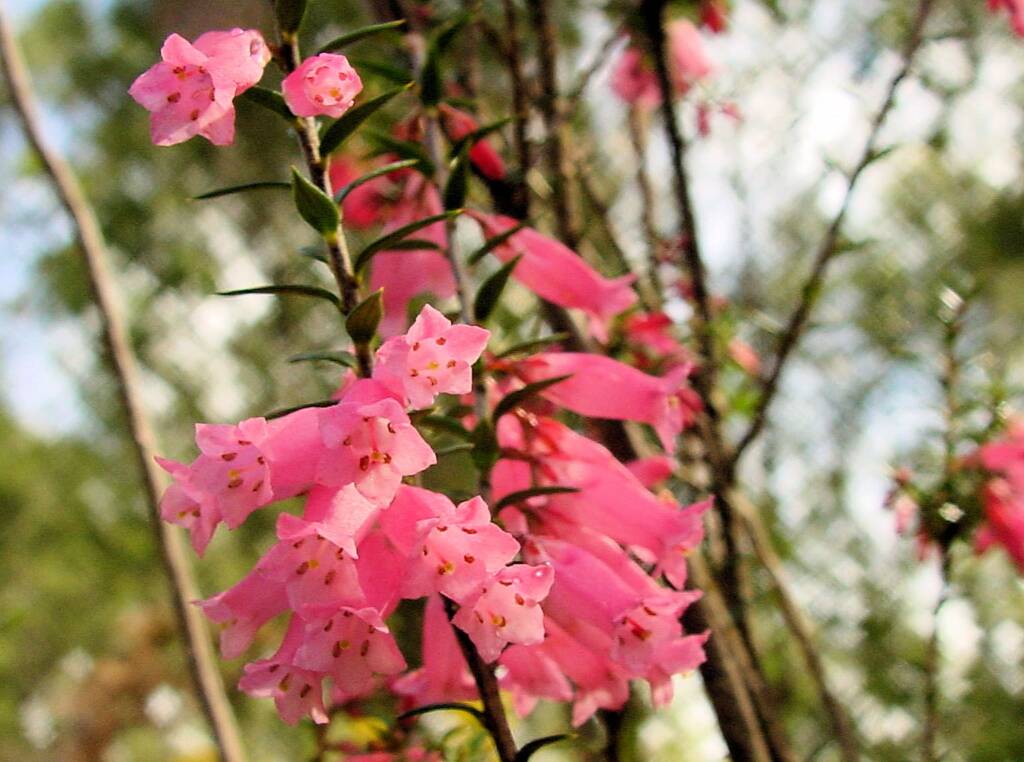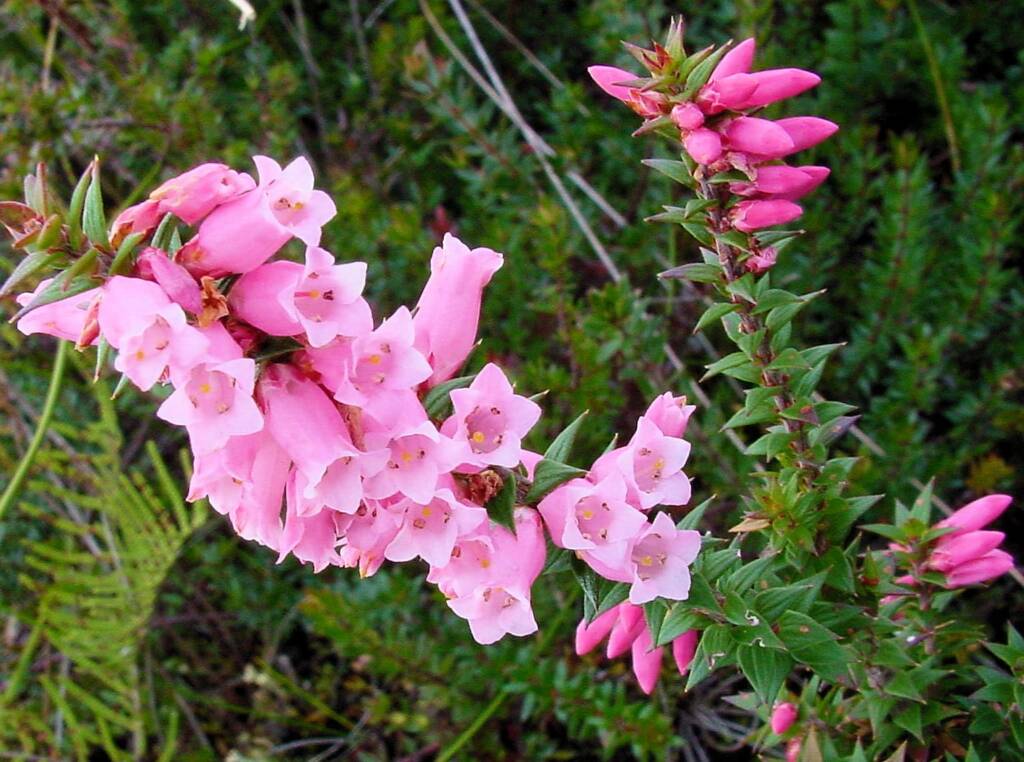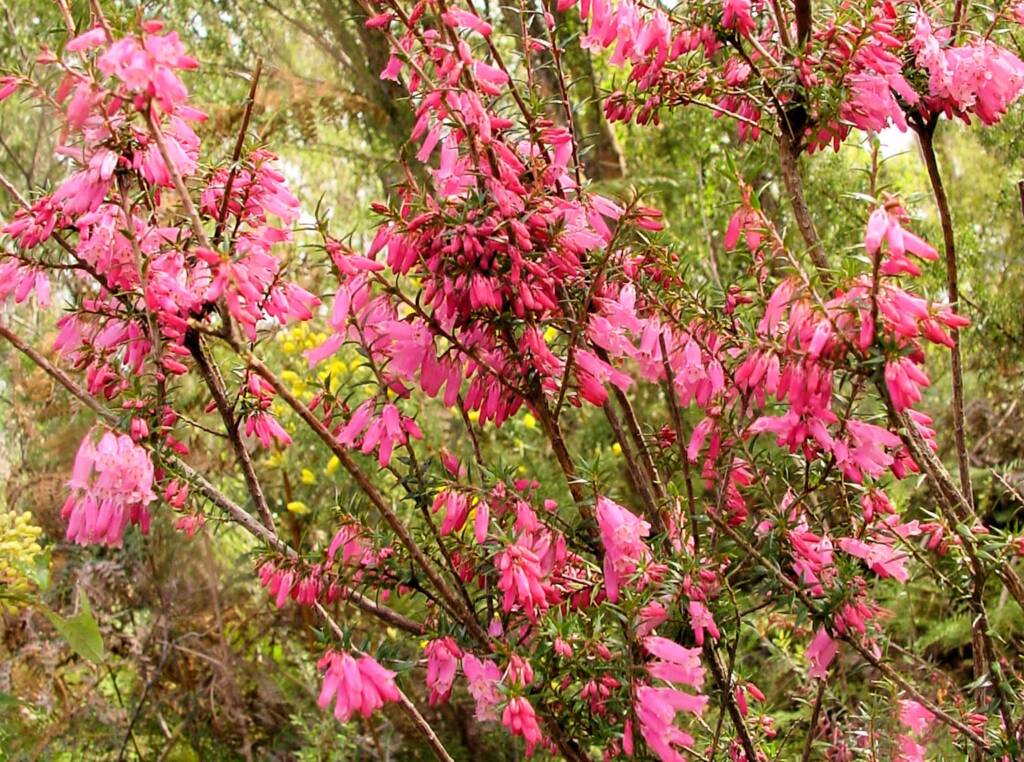Floral Emblem of Victoria
Whilst the Common Heath (Epacris impressa) is a shrub that grows up to a 2 metres in height, along the coastal habitat the slender shrub is usually less than a metre in height.
The Common Heath is an erect forming shrub with stiff branches that have rigid, small alternate leaves, narrow with pointed apices. The flowers are tubular, up to 25 mm long, arranged singly in the leaf axils. Sometimes the flowers are so densely clustered around the stems, they can assume a cylindrical brush-like appearance, whilst on other plants they may be more sparsely arranged along one side of the stem.
It was in 1793 that the French botanist, Jacques-Julien Houton de Labillardiere during his voyage with Bruny D’Entrecasteaux on the unsuccessful search for the missing explorer, La Perouse, who collected the Common Heath in Tasmania.
The Common Heath comes in a number of colours from white, pale pink, rose pink, crimson and scarlet. There is also a rare double flower form.
It is the pink form of the Common Heath that was proclaimed on the 11 November, 1958 as the floral emblem of Victoria.
Habitat: A native to the south-east corner of Australia, it is found growing in the coastal heathlands, montane and sub-alpine regions. The Common Heath can be found growing along the north coast and east coast of Tasmania, and along the coastline from Clyde River in New South Wales, along the Victoria coastline, to the Mount Lofty Ranges in South Australia. In Victoria it is also found in the adjoining foothills, the Grampians and the Little Desert.
Leaves: linear-lanceolate to ovate, 8-15 mm long to 3 mm wide, sharply pointed and closely crowded on the stems.
Flower: colour ranging from white, pink to red. Tubular, up to 2 cm long and growing in dense clusters in the upper leaf axils, at the end of the stems. Can be found flowering almost year round.
- Common name
- Pink or Common Heath, Floral Emblem of Victoria.
- Found
- Found in coastal heath and open forest inland. Prefers the wet soil locations of NSW, SA, TAS, VIC.






Images © Ausemade PL
- Scientific classification
- Kingdom: Plantae
- Clade: Tracheophytes
- Clade: Angiosperms
- Clade: Eudicots
- Clade: Asterids
- Order: Ericales
- Family: Ericaceae
- Genus: Epacris
- Species: Epacris impressa
FloraFlora in Australia Flora Index Acacia Anigozanthos (Kangaroo Paws) Annual Yellowtop Apium prostratum subsp. prostratum var filiforme Apple Bush (Pterocaulon sphacelatum) Australian Bluebell Australian Gossypium Banksia Batswing Coral Tree Billy Buttons Birdsville Indigo Blue Pincushion Bush Banana Callistemon Callitris drummondii (Drummond’s Cypress Pine) Calothamnus quadrifidus Cape Honeysuckle Cassia fistula (Golden Shower) Cattle Bush Common Heath Crotalaria Darwinia wittwerorum (Wittwer’s Mountain Bell) Daviesia oppositifolia (Rattle-pea) Desert Oaks Drumsticks Eremophila Eucalyptus Ficus Flannel Cudweed (Actinobole uliginosum) Georges Indigo Goatshead Burr (Sclerolaena bicornis) Golden Everlasting Goodenia Gossypium Grass and Grasses Grass Trees Grevillea Grey Germander Hakea Kapok Bush (Aerva javanica) Lambertia sp Leptospermum MacDonnell Ranges Cycad Maireana scleroptera Mexican Poppy Minnie Daisy Mistletoe Family Nardoo Native Apricot Nicotiana megalosiphon subspecies sessilifolia Nuytsia floribunda Orange Spade Flower Orchidaceae Parakeelyas (Calandrinia) Pebble Bush (Stylobasium spathulatum) Perennial Yellow Top Pink Everlasting Pink Rock Wort Poached Egg Daisy Portulaca Proteaceae Ptilotus Quandong Resurrection Fern Rosy Dock Ruby Saltbush Santalum Solanum Spike Centaury Spinifex Storkbill (Erodum cygnorum) Striped Mint Bush Sturt’s Desert Pea Sturt’s Desert Rose Tall Saltbush Tangled Leschenaultia Tar Vine Tribulus eichlerianus Upside-down Plant Urodon dasyphylla Variable Daisy Waratah (Telopea) Wertabona Daisy White Cedar (Melia azedarach) White Indigo White Paper Daisy Wild Passionfruit Wild Stock Woolly-Headed Burr Daisy Woolly Bush Yellow-keeled Swainsona
Flora & FaunaFauna Flora Fauna Flora Funga Glossary Funga Related Topics Scientific Classification Backyard Wildlife Floral Emblems of Australia Wildflowers
